Content
- 1 Introduction
- 2 1. Essential Bar Top Design Considerations
- 3 2. Natural Stone Bar Top Options
- 4 3. Engineered Stone and Quartz Surfaces
- 5 4. Wood Bar Top Materials and Finishes
- 6 5. Metal and Industrial Bar Top Solutions
- 7 6. Concrete and Custom Cast Surfaces
- 8 7. Glass and Acrylic Bar Top Innovations
- 9 8. Installation and Maintenance Considerations
- 10 Conclusion
- 11 Sources/References
Introduction
Designing the ideal bar top requires careful consideration of materials, functionality, and aesthetic appeal to create a space that serves as both a practical work surface and an attractive focal point for entertainment areas. The perfect bar top design balances durability with style, ensuring your investment provides years of reliable service while enhancing your home’s overall design aesthetic and entertainment value.
Modern bar top design has evolved beyond simple wood planks to incorporate sophisticated materials and innovative design concepts that reflect contemporary lifestyle preferences. Today’s homeowners seek bar tops that accommodate everything from casual family gatherings to formal cocktail parties, requiring surfaces that can withstand heavy use while maintaining their beautiful appearance over time.
The selection of bar top materials significantly impacts both the functionality and visual appeal of your entertainment space. Different materials offer unique advantages in terms of durability, maintenance requirements, cost considerations, and design flexibility. Understanding these characteristics helps you make informed decisions that align with your specific needs, budget, and design vision.
This comprehensive guide explores the most popular bar top materials, design considerations, and creative ideas to help you create the perfect bar top for your space. Whether you’re building a new home bar, renovating an existing space, or adding a bar top to your kitchen island, these insights will guide you toward making choices that provide lasting satisfaction and excellent value.
1. Essential Bar Top Design Considerations
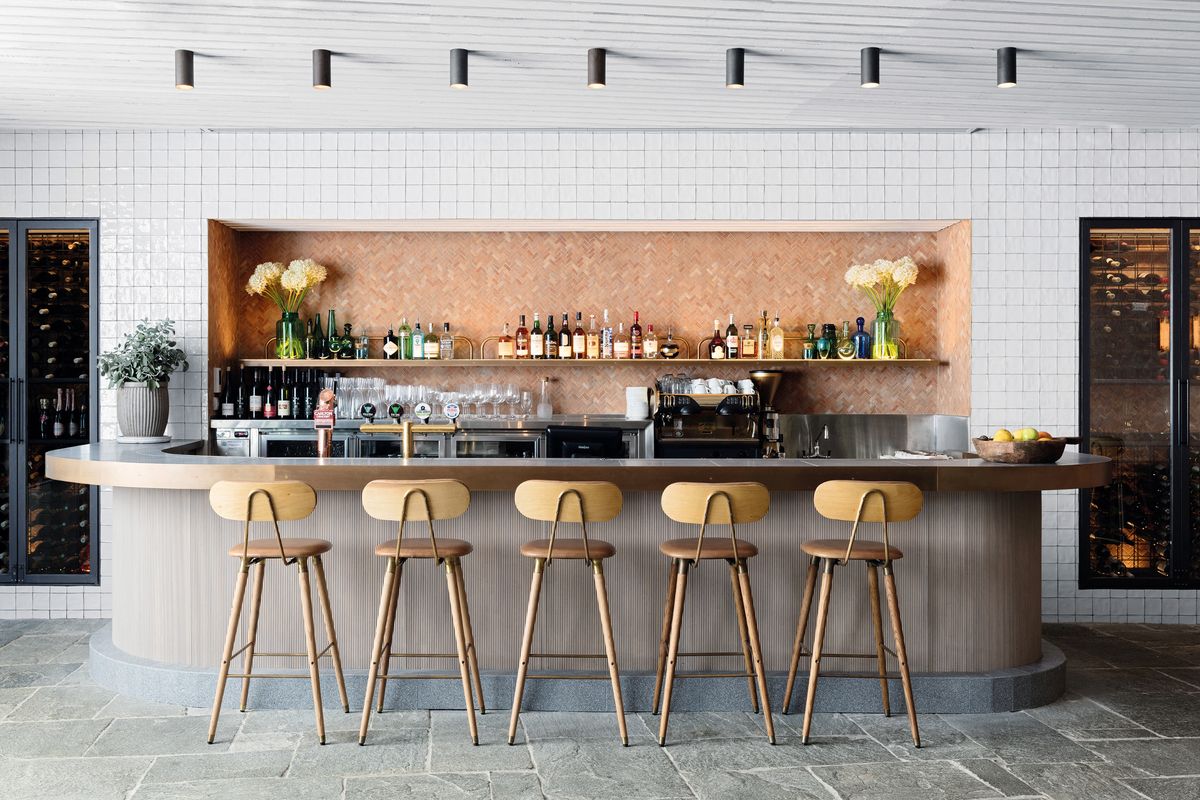
Successful bar top design begins with understanding the fundamental requirements that ensure both functionality and comfort for users. These essential considerations form the foundation for all subsequent design decisions and material selections, making it crucial to address them thoroughly before proceeding with specific material choices or aesthetic preferences.
Key Design Factors:
- Standard bar height dimensions (42 inches) and counter height options (36 inches)
- Optimal depth measurements for comfortable use and storage
- Overhang requirements for proper seating accommodation
- Weight-bearing capacity for different material choices
- Integration with existing cabinetry and room design
Bar top height selection significantly impacts both comfort and functionality, with standard bar height (42 inches) providing the classic bar experience while counter height (36 inches) offers more casual, family-friendly seating options. Consider your primary use patterns and user preferences when determining the most appropriate height for your space.
Depth considerations affect both functionality and spatial requirements, with standard depths ranging from 12-24 inches depending on intended use. Deeper surfaces accommodate more elaborate food preparation and serving needs, while narrower options work well for simple beverage service and space-constrained installations.
Overhang dimensions ensure comfortable seating by providing adequate knee and leg room for bar stool users. Standard overhangs measure 10-12 inches for bar height installations and 8-10 inches for counter height, though these may require additional support depending on material choice and span length.
2. Natural Stone Bar Top Options
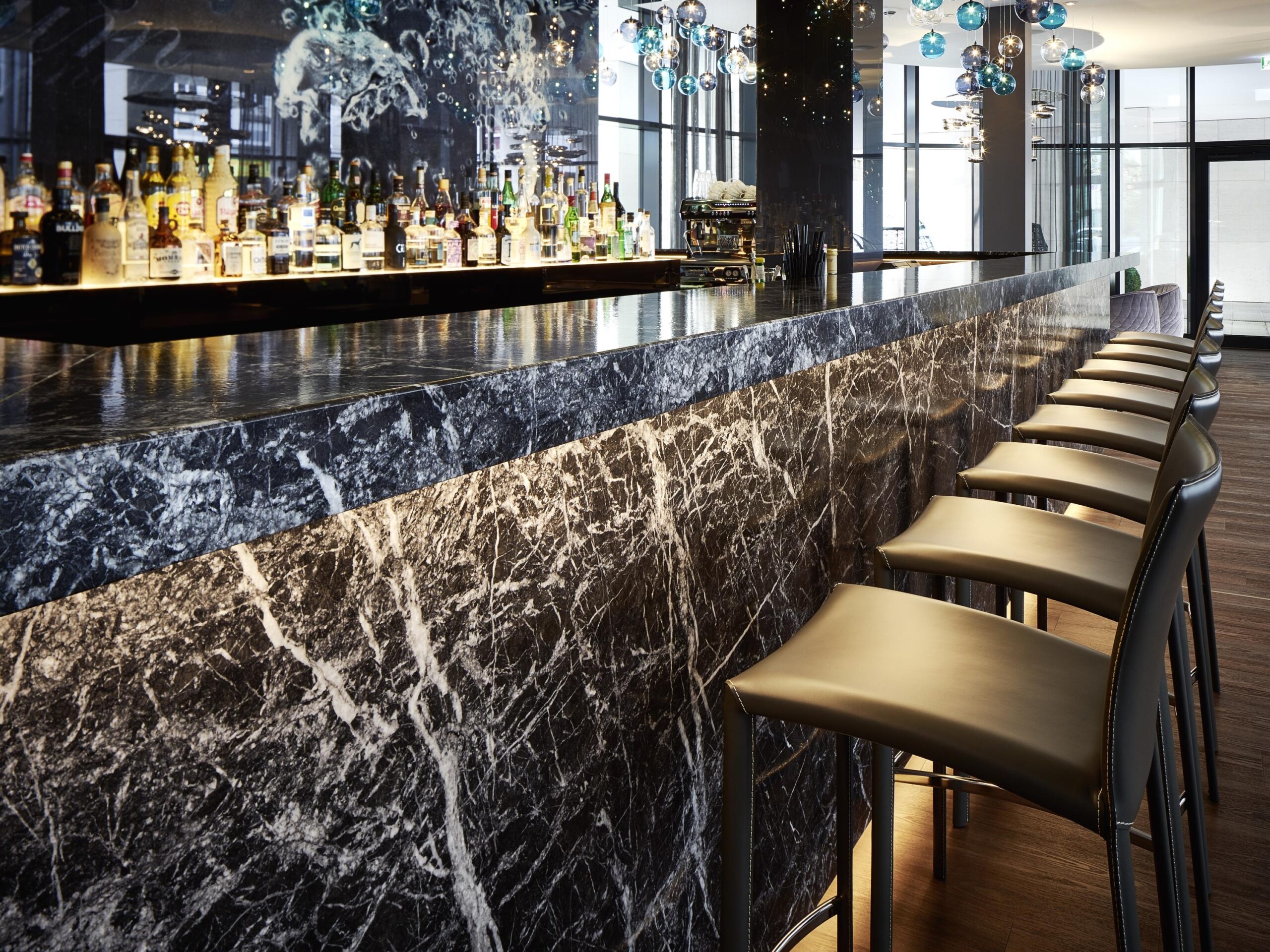
Natural stone bar tops offer unmatched beauty, durability, and prestige that make them popular choices for high-end home bars and entertainment spaces. These materials provide unique character through natural variations while offering excellent resistance to heat, scratches, and general wear that makes them ideal for heavy-use applications.
Popular Stone Options:
- Granite for exceptional durability and heat resistance
- Marble for classic elegance and sophisticated aesthetics
- Quartzite for natural beauty with superior performance
- Soapstone for unique texture and antimicrobial properties
- Slate for distinctive appearance and excellent durability
Granite bar tops represent the gold standard for durability and performance, offering exceptional resistance to heat, scratches, stains, and impact damage. The wide variety of colors and patterns available in granite ensures compatibility with virtually any design style, from traditional to contemporary aesthetics.
Marble bar tops provide unmatched elegance and sophisticated beauty that enhances any entertainment space. While requiring more careful maintenance than granite, properly sealed marble offers excellent performance and develops a beautiful patina over time that adds character and charm to your bar area.
Quartzite combines the natural beauty of marble with granite-like durability, offering the best of both worlds for discerning homeowners. This metamorphic rock provides unique veining patterns and colors while delivering superior resistance to etching, staining, and heat damage.
3. Engineered Stone and Quartz Surfaces
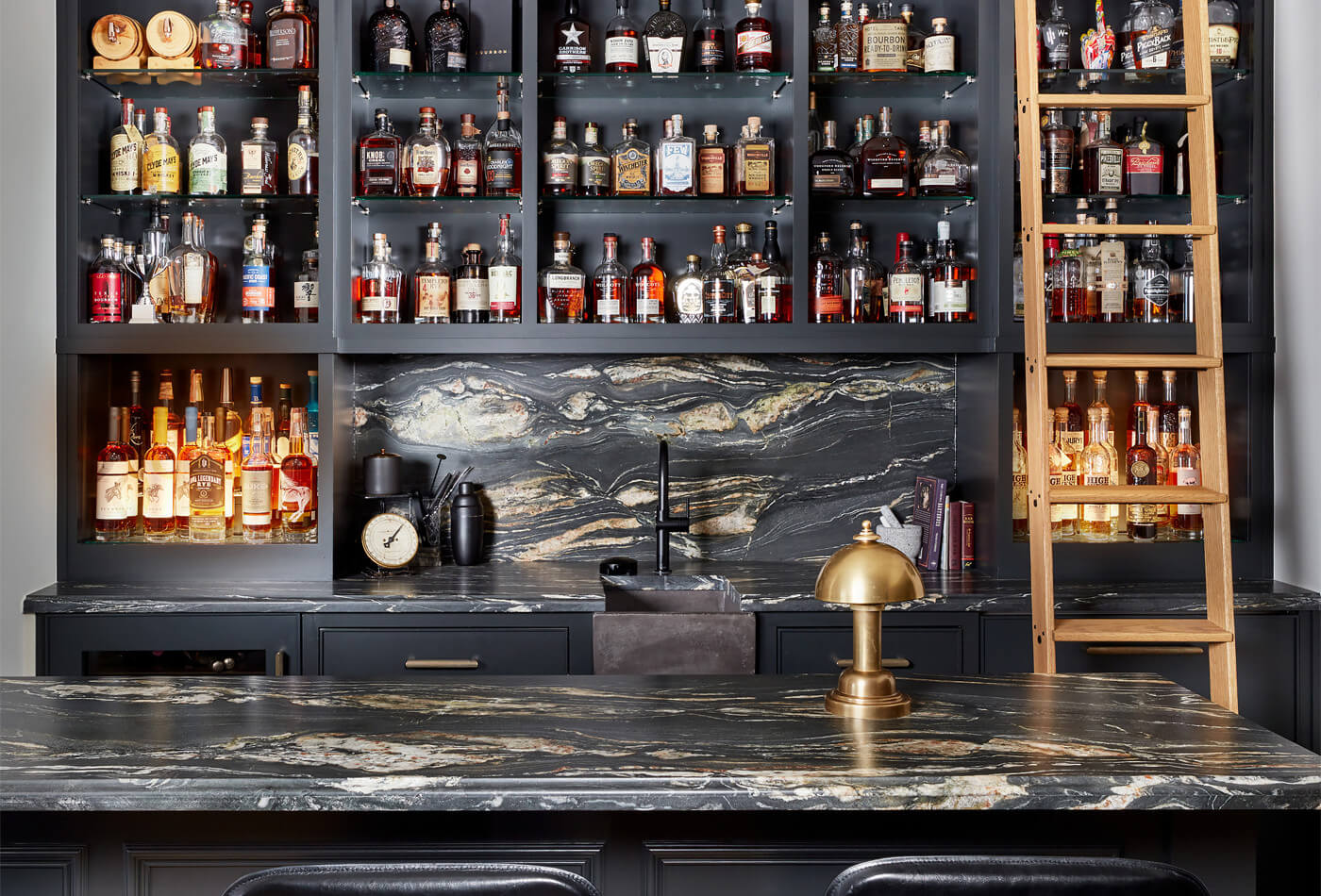
Engineered stone and quartz bar tops offer consistent quality, predictable performance, and low maintenance requirements that make them increasingly popular for modern home bars. These manufactured surfaces combine natural stone particles with advanced resins to create materials that often outperform natural stone in durability while offering greater design consistency.
Engineered Surface Advantages:
- Consistent color and pattern throughout the material
- Non-porous surfaces that resist stains and bacteria
- Superior strength and impact resistance
- Minimal maintenance requirements with no sealing needed
- Wide variety of colors and patterns including natural stone looks
Quartz bar tops provide exceptional durability and stain resistance while maintaining consistent appearance throughout the material. Unlike natural stone, quartz surfaces don’t require periodic sealing and offer superior resistance to acidic substances that can damage natural marble and limestone.
The manufacturing process for engineered stone allows for precise color control and pattern consistency that natural stone cannot match. This predictability makes design planning easier while ensuring the final installation matches your expectations exactly.
Heat resistance varies among different engineered stone products, with most requiring trivets or hot pads for items above 300°F. While this represents a limitation compared to natural granite, the superior stain resistance and maintenance benefits often outweigh this consideration for many homeowners.
4. Wood Bar Top Materials and Finishes

Wood bar tops bring warmth, character, and natural beauty to home bars while offering excellent workability for custom installations and unique design features. The variety of wood species, grain patterns, and finish options available makes wood an incredibly versatile choice that can complement any design style from rustic to contemporary.
Popular Wood Species:
- Hardwood options like oak, maple, and cherry for durability
- Exotic woods including teak, mahogany, and walnut for luxury appeal
- Reclaimed wood for sustainable and character-rich surfaces
- Bamboo for eco-friendly and moisture-resistant properties
- Butcher block construction for classic bar aesthetics
Hardwood bar tops provide excellent durability when properly finished and maintained, with species like oak and maple offering exceptional strength and attractive grain patterns. These traditional choices work well with both classic and contemporary design styles while providing good value for long-term use.
Exotic wood species offer unique colors, grain patterns, and natural properties that create distinctive bar tops with exceptional character. While typically more expensive than domestic hardwoods, these materials provide unmatched beauty and often superior moisture resistance for bar applications.
Reclaimed wood bar tops combine environmental responsibility with unique character that new materials cannot replicate. These surfaces often feature interesting patina, nail holes, and weathering patterns that tell stories while providing excellent durability and distinctive appearance.
5. Metal and Industrial Bar Top Solutions
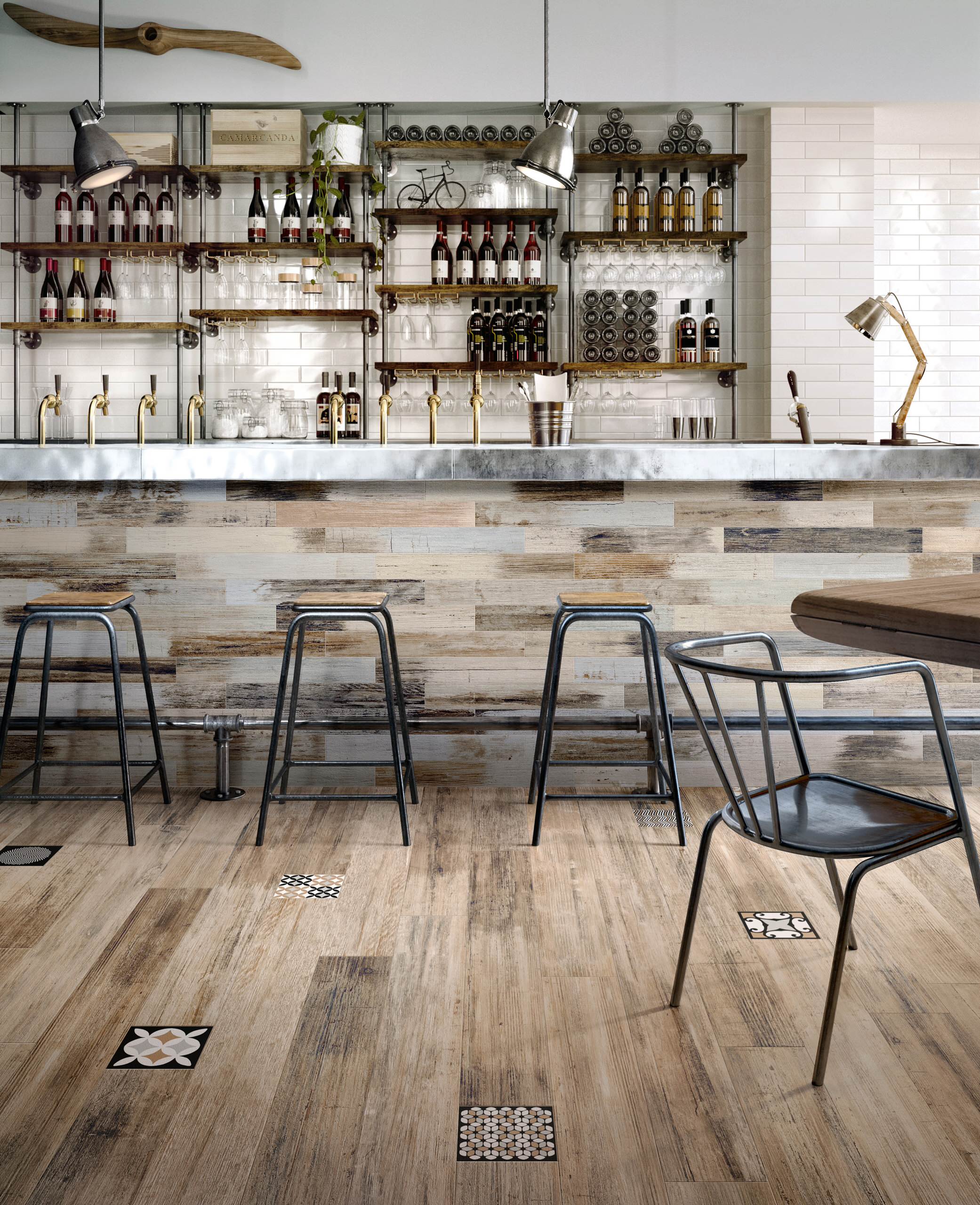
Metal bar tops offer contemporary aesthetics, exceptional durability, and easy maintenance that make them ideal for modern home bars and commercial-style installations. These materials provide unique design opportunities while delivering superior performance characteristics that withstand heavy use and frequent cleaning.
Metal Bar Top Options:
- Stainless steel for professional appearance and easy maintenance
- Copper for warm patina development and antimicrobial properties
- Zinc for distinctive appearance and natural aging characteristics
- Aluminum for lightweight installation and corrosion resistance
- Brass for traditional elegance with modern performance
Stainless steel bar tops provide the ultimate in sanitary surfaces with exceptional resistance to stains, heat, and bacterial growth. These surfaces work particularly well in contemporary and industrial design styles while offering easy cleaning and maintenance that makes them practical for frequent use.
Copper bar tops develop beautiful patina over time while providing natural antimicrobial properties that enhance sanitation. The warm color and unique aging characteristics of copper create distinctive surfaces that become more beautiful with use and time.
Zinc bar tops offer distinctive gray coloring and natural aging properties that create unique character over time. These surfaces work well in both traditional and contemporary settings while providing excellent durability and relatively easy maintenance requirements.
6. Concrete and Custom Cast Surfaces

Concrete bar tops provide unlimited design flexibility through custom casting, coloring, and finishing techniques that create truly unique surfaces tailored to specific design visions. Modern concrete technology offers sophisticated options that rival traditional materials while providing opportunities for creative expression and custom features.
Concrete Design Possibilities:
- Custom colors through integral pigments and staining
- Embedded decorative elements like glass, stones, or metals
- Textured surfaces from smooth to heavily textured finishes
- Custom edge profiles and integrated features
- Eco-friendly options using recycled materials
Custom concrete bar tops allow for integration of unique features like built-in bottle openers, drainage channels, or decorative inlays that enhance both functionality and visual appeal. These custom elements can be cast directly into the surface during fabrication for seamless integration.
Coloring options for concrete bar tops include integral pigments, acid stains, and topical colorants that create everything from subtle earth tones to vibrant contemporary colors. Multiple coloring techniques can be combined to create complex, sophisticated appearances that complement any design style.
Surface textures range from polished, mirror-like finishes to heavily textured surfaces that provide slip resistance and visual interest. The chosen texture significantly impacts both appearance and maintenance requirements, with smoother surfaces offering easier cleaning but potentially showing wear more readily.
7. Glass and Acrylic Bar Top Innovations
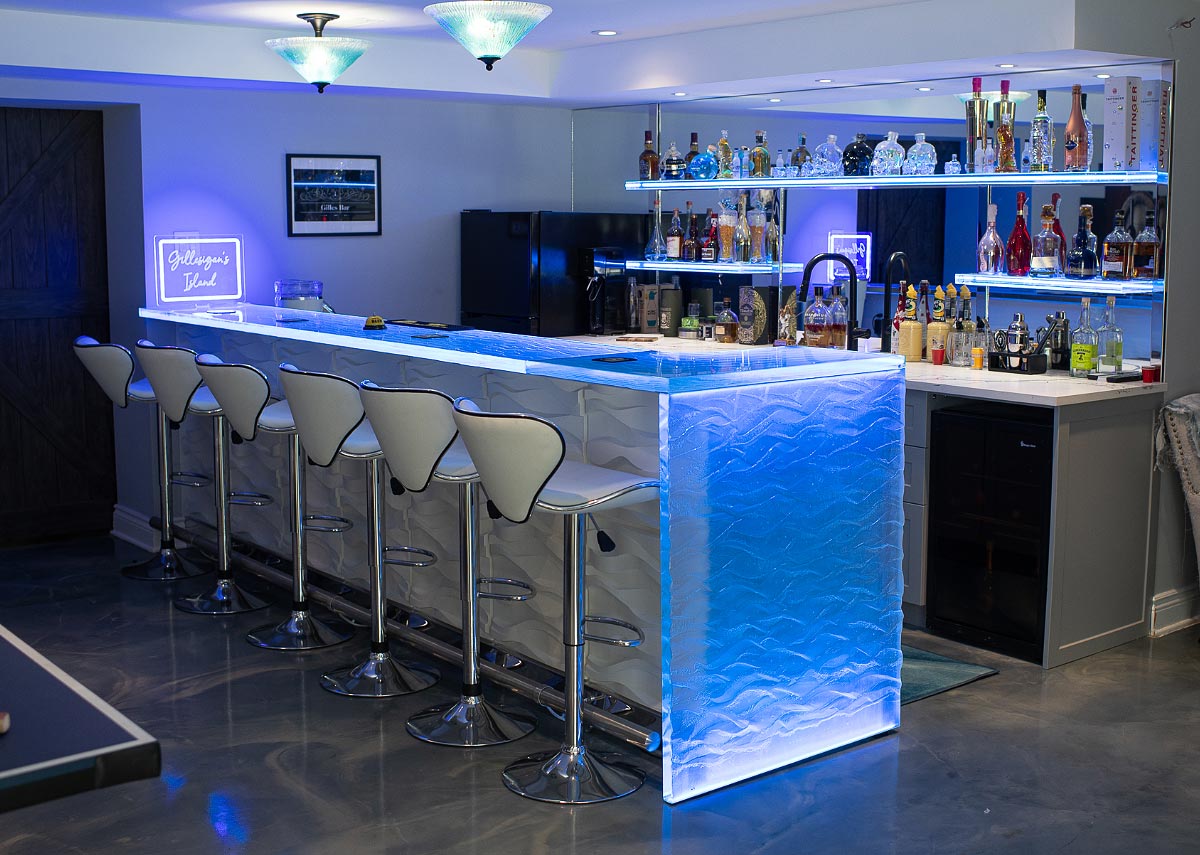
Glass and acrylic bar tops offer unique aesthetic opportunities through transparency, lighting integration, and contemporary styling that creates dramatic focal points in modern entertainment spaces. These materials provide opportunities for creative lighting effects and visual impact that traditional opaque surfaces cannot achieve.
Glass and Acrylic Features:
- Tempered glass for safety and durability
- Back-lit installations for dramatic lighting effects
- Colored and textured glass options for visual interest
- Acrylic for lighter weight and impact resistance
- Custom etching and decorative treatments
Tempered glass bar tops provide exceptional strength and safety characteristics while offering crystal-clear surfaces that showcase underlying cabinetry or lighting installations. When properly supported, tempered glass offers excellent durability and easy maintenance for bar applications.
Back-lighting integration creates stunning visual effects that transform glass bar tops into dramatic focal points for entertainment spaces. LED lighting systems can be programmed for different colors and effects while providing energy-efficient operation and long service life.
Acrylic bar tops offer similar transparency to glass while providing superior impact resistance and lighter weight for easier installation. Modern acrylic materials resist yellowing and scratching while offering excellent clarity and design flexibility.
8. Installation and Maintenance Considerations
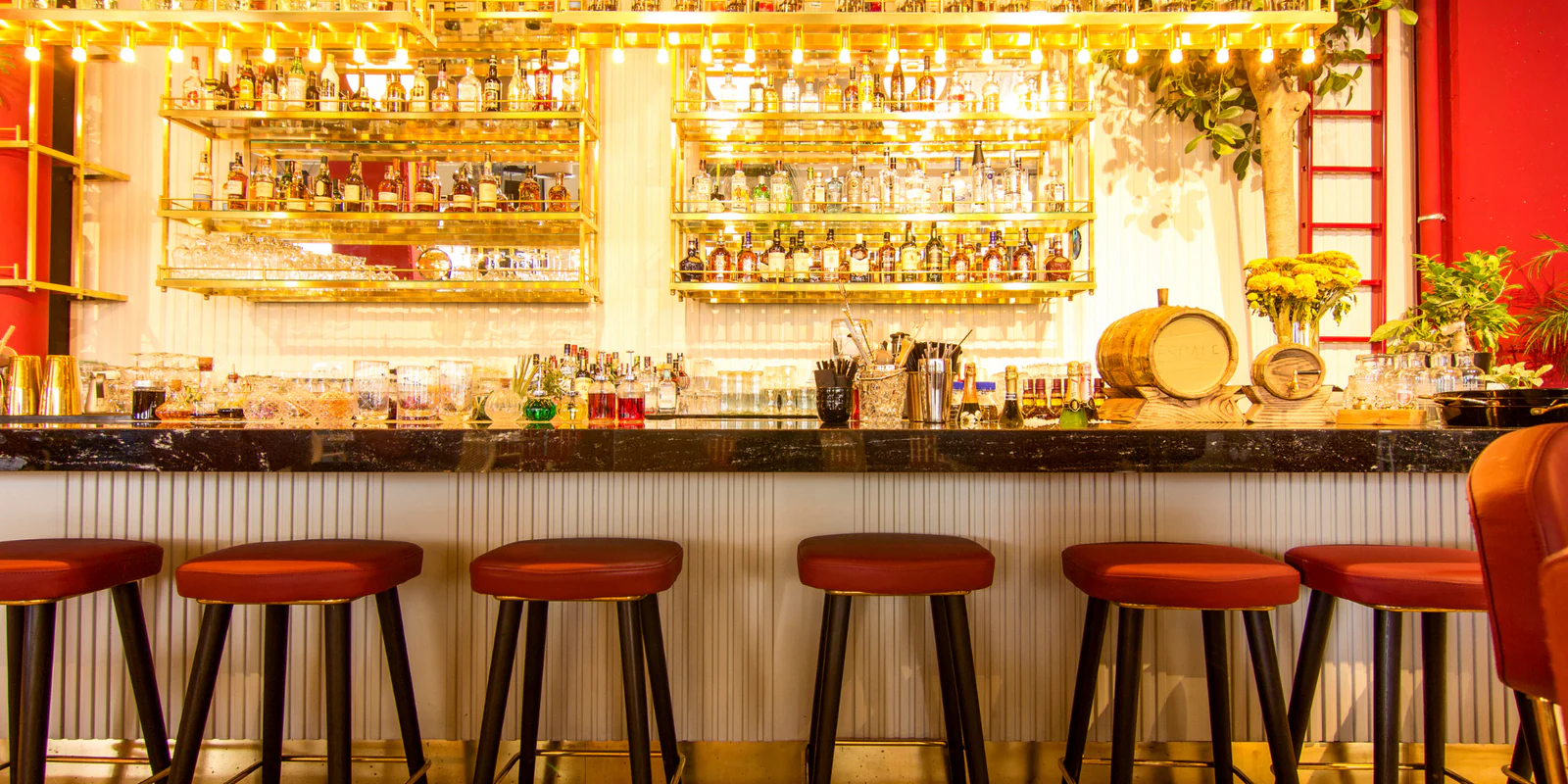
Proper installation and ongoing maintenance significantly impact the performance, appearance, and longevity of your bar top investment. Understanding these requirements helps you make informed material choices while ensuring your bar top provides years of reliable service and continued beauty.
Installation Requirements:
- Adequate structural support for material weight and use
- Professional fabrication and installation for complex materials
- Proper sealing and finishing for optimal performance
- Integration with plumbing and electrical systems
- Compliance with local building codes and safety requirements
Structural support requirements vary significantly between different bar top materials, with natural stone requiring substantial support while wood and laminate options may work with standard cabinetry. Understanding these requirements early in the planning process prevents costly modifications during installation.
Professional installation becomes essential for materials like natural stone, concrete, and complex metal fabrications that require specialized tools, techniques, and experience. While increasing project costs, professional installation ensures optimal results and often includes warranty protection.
Maintenance requirements differ dramatically between materials, with some requiring regular sealing and special cleaning products while others need only basic cleaning for optimal performance. Consider your willingness to perform ongoing maintenance when selecting bar top materials.
Conclusion
Designing the ideal bar top requires balancing aesthetic preferences with practical considerations including durability, maintenance requirements, and budget constraints. The most successful installations combine beautiful materials with thoughtful design that enhances both functionality and visual appeal while providing lasting value and satisfaction.
Remember that your bar top will serve as a focal point for entertainment and daily use, making quality materials and proper installation worthwhile investments. Focus on materials and designs that align with your lifestyle, maintenance preferences, and long-term satisfaction rather than following trends that may not suit your specific needs.
Take time to experience different materials in person and consider how they will perform in your specific use environment. Factors like lighting, surrounding materials, and intended use patterns all influence the success of different bar top options.
The perfect bar top enhances your entertainment space while providing reliable performance for years of enjoyment. With careful planning and informed decision-making, your bar top selection will serve as a beautiful, functional centerpiece that brings people together and creates lasting memories.
[Resim Önerisi: İdeal bar tezgahı tasarımı – fonksiyonel ve estetik mükemmellik]
How thick should a bar top be?
Standard bar top thickness ranges from 1.5 to 2 inches for most materials, with thicker options (up to 3 inches) available for dramatic visual impact. Natural stone typically measures 1.25-1.5 inches thick, while wood bar tops often range from 1.5-2.5 inches. Thicker surfaces provide more substantial appearance but require stronger support structures and increase material costs.
Do I need special support for a bar top overhang?
Bar top overhangs exceeding 8-10 inches typically require additional support through corbels, brackets, or support posts, especially for heavy materials like stone. The specific support requirements depend on material weight, overhang distance, and local building codes. Consult with professionals for overhangs exceeding 12 inches or when using heavy materials like granite or concrete.
How much does a custom bar top cost?
Custom bar top costs vary widely based on material choice, size, and complexity, ranging from $50-200+ per square foot installed. Laminate and basic wood options start around $50-75 per square foot, while natural stone ranges from $75-150 per square foot. Premium materials like exotic woods or custom concrete can exceed $200 per square foot. Professional installation typically adds $15-30 per square foot.
What bar top materials require the least maintenance?
Quartz and other engineered stone surfaces require the least maintenance, needing only regular cleaning with mild soap and water. Stainless steel also offers easy maintenance with standard cleaning products. Natural stone requires periodic sealing, wood needs regular conditioning and refinishing, while concrete may need occasional resealing depending on the finish applied.
Sources/References
- National Kitchen & Bath Association (NKBA) – Bar Design Guidelines https://nkba.org/home-bar-design-standards
- Better Homes & Gardens – Bar Top Ideas and Materials https://www.bhg.com/kitchen/countertop/bar-top-materials/
- This Old House – Home Bar Construction Guide https://www.thisoldhouse.com/kitchens/21018310/home-bar-guide
- HGTV – Bar Top Design and Installation https://www.hgtv.com/design/rooms/kitchens/bar-top-ideas-pictures
- HomeAdvisor – Bar Top Installation Costs https://www.homeadvisor.com/cost/kitchens/install-bar-top/
- Architectural Digest – Home Bar Design Ideas https://www.architecturaldigest.com/gallery/home-bar-ideas
- Fine Homebuilding – Bar Construction Techniques https://www.finehomebuilding.com/project-guides/kitchens/bar-construction
- Stone World Magazine – Bar Top Materials Guide https://www.stoneworld.com/articles/bar-top-materials-guide


